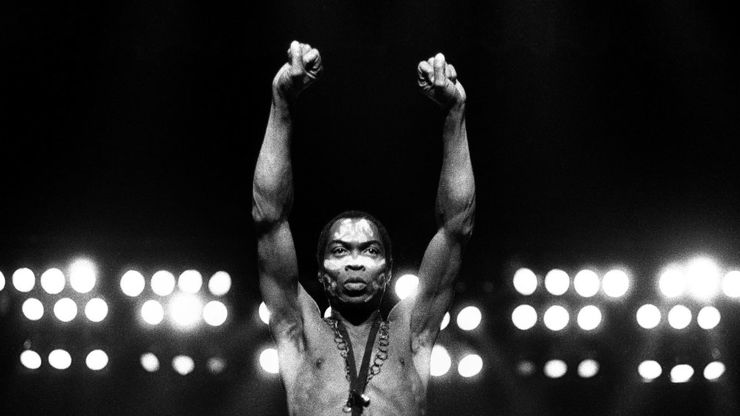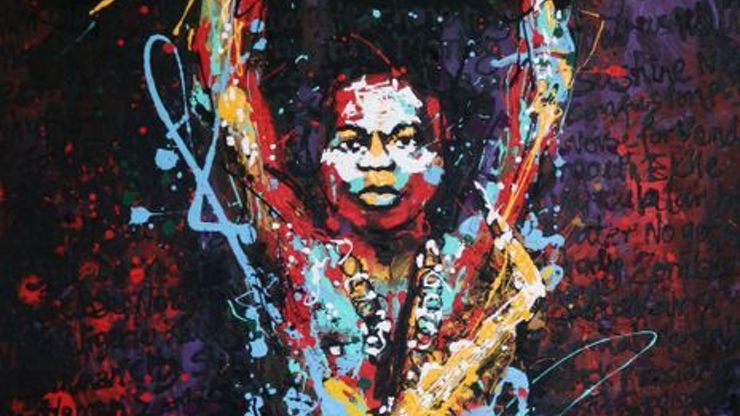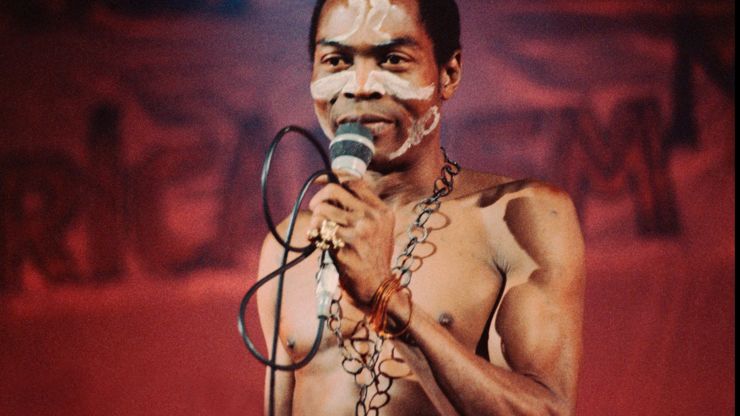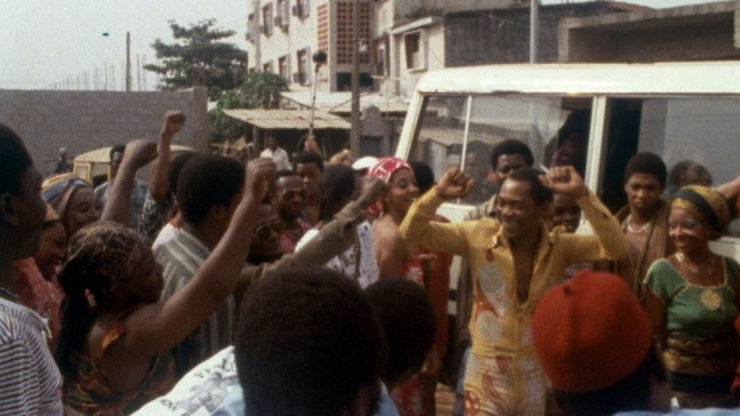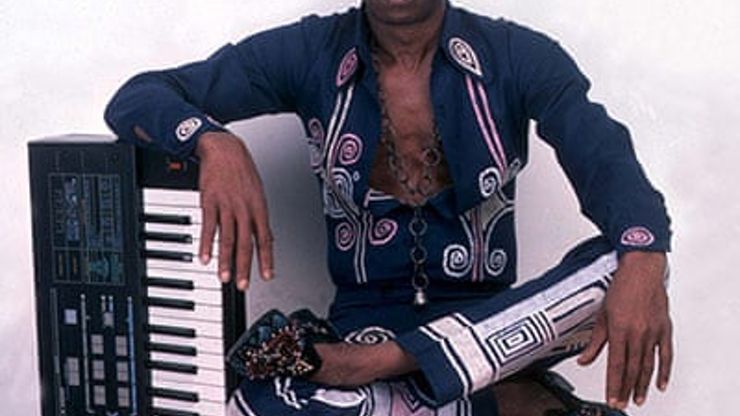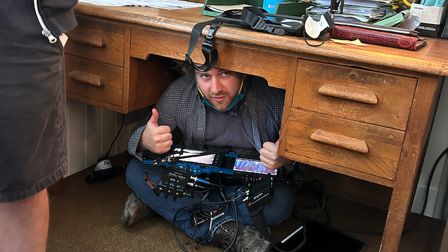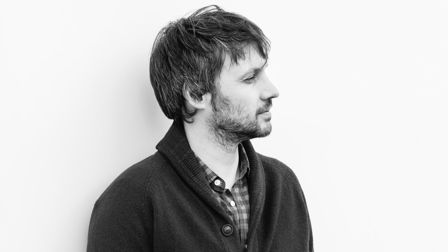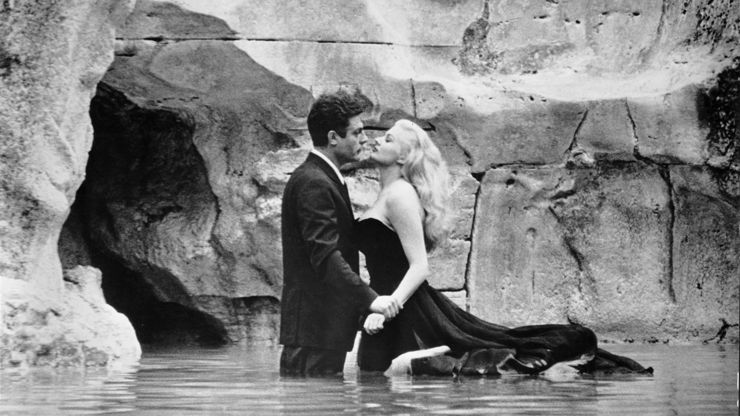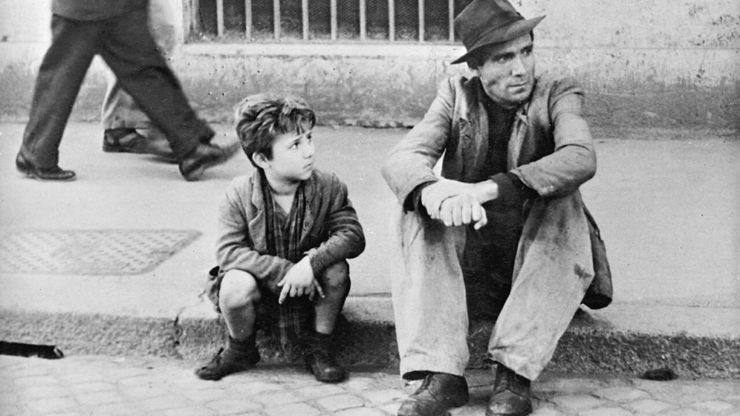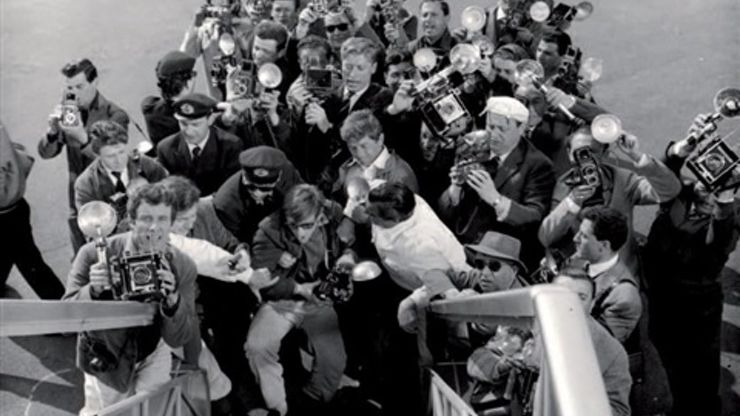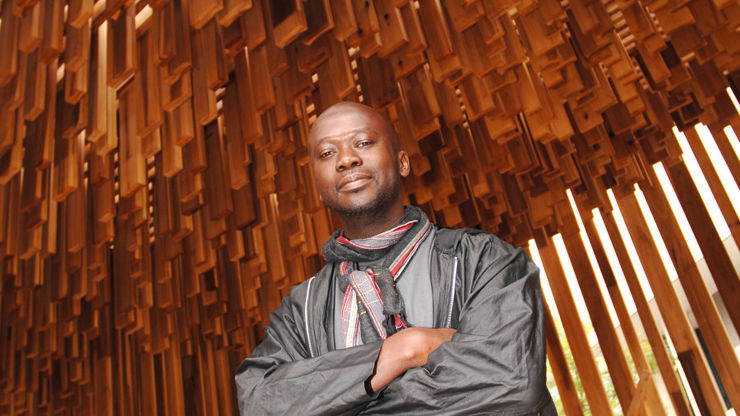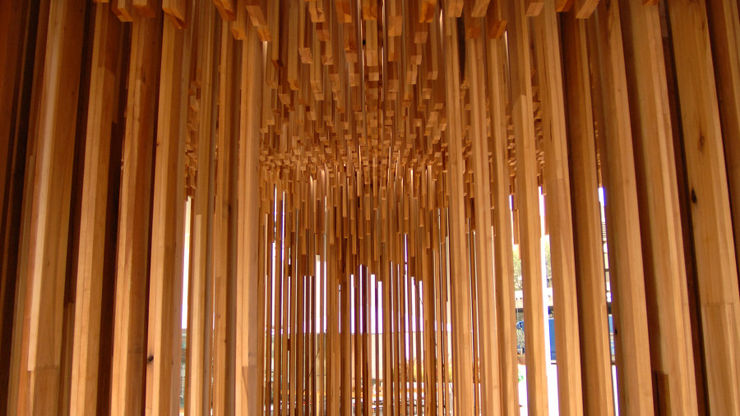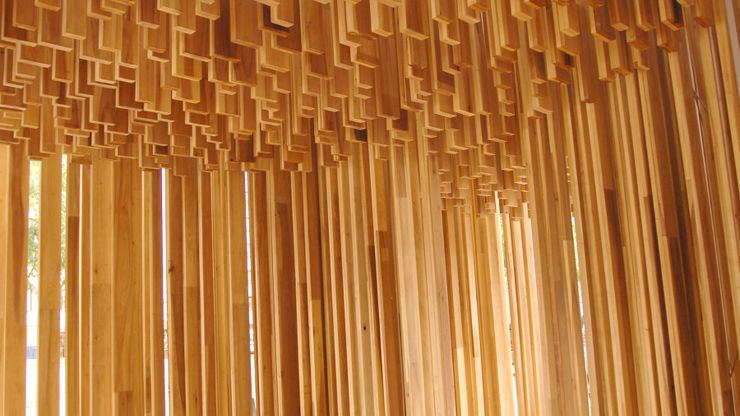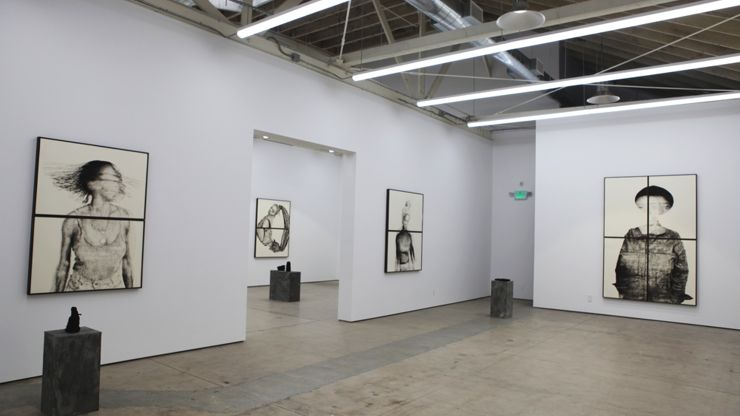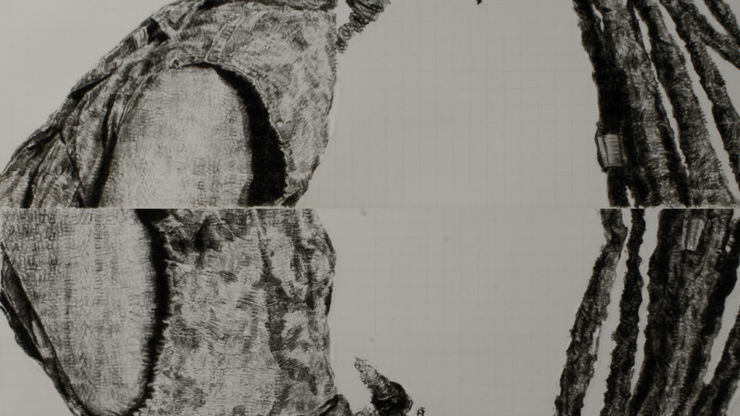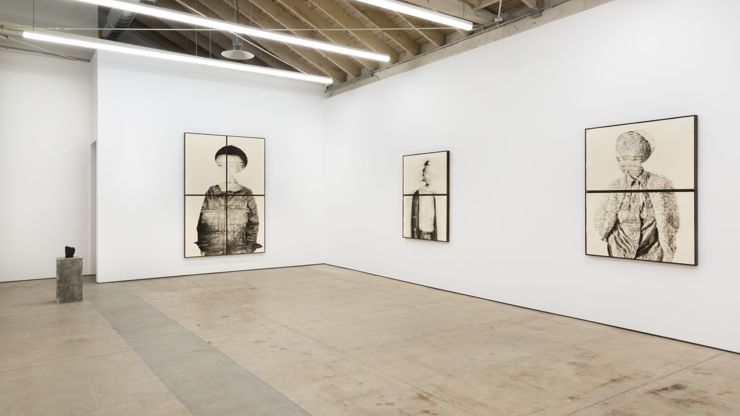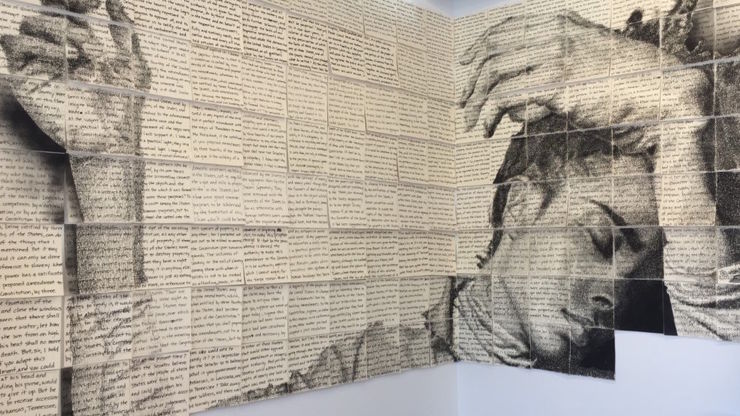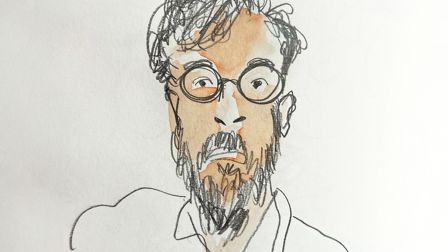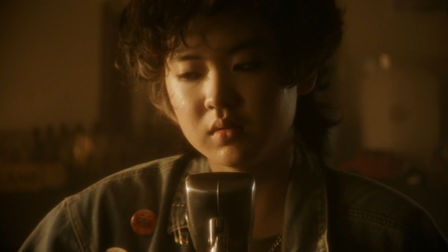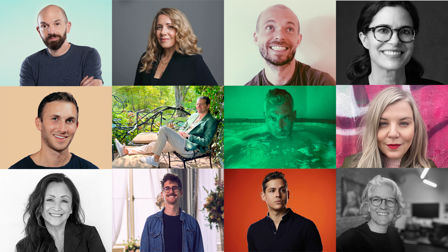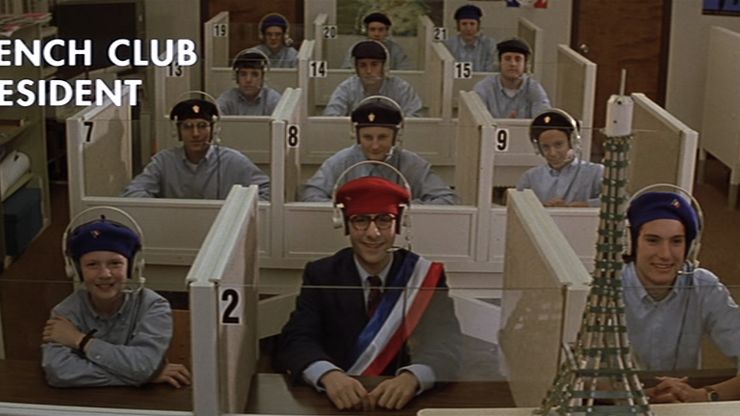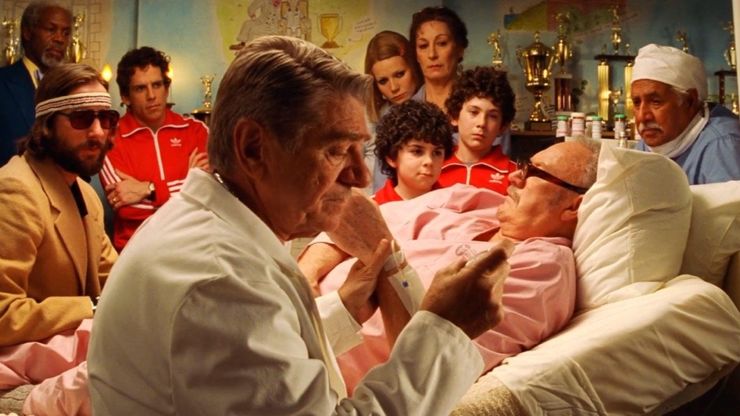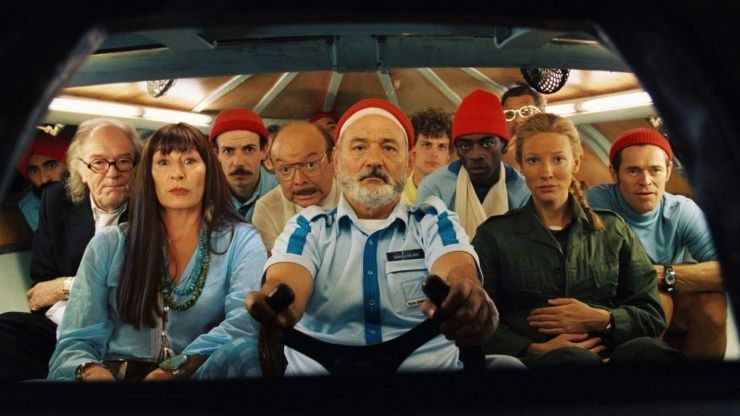)
Art of Advertising: Ian Aryeh
From Ian Aryeh, of Dark Energy: "All these artists create original and layered work and that is something that should be celebrated. They have all played a role in contributing towards popular culture and influenced how we tell stories."
"I draw influences to all my work from life and way stories present themselves in many creative guises."
Ian Aryeh: I like to bring a decidedly artistic sensibility to the craft of filmmaking as I blend my various influences together to create work that is dynamic, textured and cinematic. Humour is at the heart of everything I do, because laughter is truly the best medicine to deal with life. I am drawn to artists who have a positively disruptive punk approach to their art, space and world. Using this explosive energy of creativity to be present in everything that do.
When it comes to being creative its the essence of being human and that is something that should always be revered and celebrated.
With the resurgence of the Black Live Matter movement alongside being a Black British creative - this is a great time to nurture diaspora black artists and their contributions to culture of life.
Fela Kuti
Fela is an incandescent figure; a polygamist, revolutionary, and founder of Afrobeat. The musical genre afrobeat originated in the 1960s and 1970s as traditional Yoruba music blended with jazz, West African highlife, and funk. Fela came of age during Nigeria’s struggle with the twin spectators of colonial suffocation and the impossibly romantic notions of independence. He bridged these two worlds together through his music.
I first heard the music of Fela Kuti as a very young boy, my father used to mix records in the house, playing everything from High Life - shout out Daddy Lumba, funk, R&B, rock and roll and everything in between. Music was a very big presence in my life growing up and plays such an important role in my mood and shaping life experiences. When I first latched onto the seismic stylings of Fela, I was enthralled by how the music had gripped me, both physically and mentally.
It was only as I got older did I really appreciate the deeper meaning to Fela’s work and his legacy celebrating African culture and prosperity.
He has influenced so many artists from different mediums, but especially in music. I love how he draws inspiration from different genres and blends them together into his own style and that’s something I like to do with my work. He helps us understand how an artist can transcend their medium to stand up to power. Not by adopting the message of the powerful and urging people to go out and take arms, rather he says you can take art within you, and that can fill the heart with your own rhythm, importance, and message in a way that no government or anyone else can extinguish. I love this sentiment - here is an artist who has sacrificed everything for his art.
Fela helps us understand how an artist can transcend their medium to stand up to power.
As a Black British person, there is a profound quality to simply witnessing art by Black creators, whether it’s in the UK, from America, Africa, or the larger diaspora making head waves across the world. It invigorates me, it inspires me, and it moves me to want to provide my own contribution to the world of creativity.
Italian Neorealism in cinema
I am a child of creative expression no matter the medium, but I particularly love cinema. So much of modern cinema can trace its roots back to the ‘Golden Age of Italian cinema’ and the Italian Neorealism period. Birthed at the end of World War II by Italian filmmakers, as a response to the chaos, turmoil and horrific economic conditions that afflicted the country. These filmmakers with limited resources began to focus their films on the everyday struggles of communities across the country.
Despite initially appearing relatively simplistic in its technical facets - Italian Neorealism exhibits the most artistic qualities of cinema, through its focus on socially and politically relevant themes placing a humanist lens on the real problems of real people, which I find is a goal that all high calibre art should aim aim for a express.
Italian Neorealism tells stories about communities.
Filmmakers of the neorealist movement carried a dark and gritty sensibility, one that was primed by the dregs of war, but still managed to merge humour to bring themes of solemnity to the screen. The cultural significance and evolution of this movement has influenced the way stories can be visually expressed and communicated richly, from the direction, score, and cinematography, to the characters, places, and experiences they encounter. This cinema tells stories about communities.
Film and TV as a visual storytelling medium should open up audiences to worlds they might not have known before. The craft and themes of Neorealism has permeated its way into so much content I love - reflected in the search through existential inquiries, inherently cool mood, and expression of cinematic poetry. Bringing a change in the execution of cinema as art. The perception of the world through the art, raises cinema to another level.
Sir David Adjaye
I have always been inspired by space, architecture and design - I love how they can shape our perception of time, events and emotions. As a director you are always thinking how best to use the space and location you are in as another layer to storytelling. How do the characters react to the space as well as the information they are sharing. How does a location give the audience a deeper sense of tone, or explore themes visually. I’m fascinated by how architecture can be used as a medium to tell stories
He creates buildings that people pilgrim to - just to say they have been to the building and have seen it with their own eyes.
As I got more into the artistry of architecture and space l was taken back by the work of Sir David Adjaye, one of the leading architects of our time. Delving deeper into his work, it was clear that his ingenious use of materials and his sculptural ability were drawn from his artist’s sensibility and vision. The use of space and design in the architecture he creates are bold statements of a complex contemporary world and an unsettled territory of cultural experimentation. Private residences are places of urban retreat, while the civic buildings dissolve the idea of the institution. The emphasis on light, the use of distinctive materials and colour palettes, the play between positive and negative, and the ability to turn constraints into compelling narratives, are critical themes to his work. He creates beautiful buildings that tell stories in themselves. He also creates buildings that people pilgrim to - just to say they have been to the building and seen it with their own eyes.
Below is a piece called the Sclera Pavilion - Conceived as a contribution to the 2008 London Design Festival.
Sir Adjaye said of the creation; “Working with tulipwood timber allows to really bring out a series of positive and negative forms together. The architecture looks opaque and solid as you approach it, you think it’s a sealed room that dissolves as you enter. You realise that it is a moment where your heightened feeling of light and air are brought into the fore and the visual world is taken away from you,”
Kenturah Davis
Her work oscillates between various facets of portraiture and design. She paints pictures with her words, making emphatic marks by applying oil paint with stamp letters. she explores the fundamental role that language has in shaping how we understand ourselves and the world around us. This manifests itself in a variety of forms including drawings, textiles, sculpture and performances. Her art encourage the viewer to contemplate the power of language because each line is imbued with a deeper meaning; form becomes intertwined with content.
I look to express meaning, not only from what you read on the page, but how you experience the message visually, with and without words.
I was mesmerised by her exhibition Blur in the Interest of Precision, which is a search for parallel conditions between the poetics of our visual experience and the strangeness of our relationship to language. Her layered meaning in her work inspires me to make sure my work is full of substance and purpose. I look to express meaning, not only from what you read on the page, but how you experience the message visually, with and without words. The power in showing over telling is crucial in film. One of the reasons Kenturah’s work is so compelling is that she combines great skill in drawing in a unique faction with a powerful conceptual idea of what she envisions the meaning of the art work to be. I find her work full of character and cinematic in its exploration of these ideas.
Wes Anderson
Wes Anderson is one of the most distinctive filmmakers of the modern age. You always know when you’re watching a Wes Anderson film, I love his distinctive style, world, and tone within his stories. His work has been described as a mixture of vintage tchotchkes, droll repartee, and houndstooth, but it’s so much more than that - he really relishes the devil in the detail and each of his films feel layered as they push the maxims of filmmaking to tell story. The Wes Anderson aesthetic is much more deliberate. It seems simple, but it's complex. Audiences get to enjoy a sophisticated film nuanced in art direction, production design and visual gags, but executed in such a deliberate manner that the viewer always discovers these little easter eggs that inform our mood.
[Rushmore's] examination of youthful alienation, misplaced desire, and subsequent growth ushers [Max] into something more closely resembling adulthood.
I love the childlike perspective of his films and his sense of exploration and play, that mix humour with very serious themes and emotions to tell stories in his unique way. He is one of few directors who can pull off massive tonal shifts, whilst keeping his films centered and cohesive. You can see his influences drawn from the world of fiction, fashion, architecture, music, art, and so much more.
Rushmore is my favourite Wes Anderson film - I love the fact that Max has his own way of seeing the world. He has he has his own ideas of things he wants to accomplish, and great enthusiasm and energy for them. The film’s examination of youthful alienation, misplaced desire, and subsequent growth ushers him into something more closely resembling adulthood. In another director’s hands you wouldn’t get the richness that Wes has built in this film and all subsequent ones. Wes Anderson’s films are undeniably fun and could only be made by him. He continues to inform and inspire my approach to storytelling through my own distinctive voice and styling.
)




 + membership
+ membership

